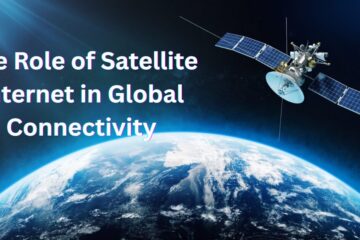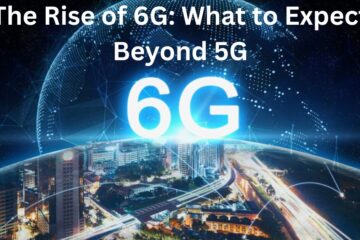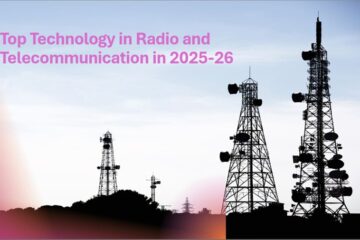The evolution from 4G to 5G in the dynamic telecommunications landscape represents a quantum leap in speed, reliability, and connectivity. Innovative technologies such as MIMO antenna and beamforming are at the heart of this transformation. These advancements are not merely incremental upgrades but fundamental shifts that promise to redefine how we communicate, interact, and leverage digital infrastructure. In this article, we delve into the intricacies of MIMO antenna systems and the revolutionary impact of beamforming in the real of 5G telecommunications.
Understanding MIMO Antenna Systems
MIMO, an acronym for Multiple Input Multiple Output, is a cornerstone technology in modern wireless communication systems. Unlike traditional single-antenna systems, MIMO employs multiple antennas for transmitting and receiving data simultaneously. This parallel transmission and reception significantly enhance data throughput, spectral efficiency, and overall network capacity.
Key Elements of MIMO Antenna Systems:
- Spatial Multiplexing: MIMO utilizes spatial diversity by transmitting independent data streams across multiple antennas. This technique exploits the spatial dimension to increase data rates without requiring additional bandwidth.
- Diversity Gain: By leveraging multiple antennas, MIMO systems mitigate signal fading and improve reliability, especially in challenging environments such as urban areas or indoor spaces.
- Beamforming: MIMO antennas can also be used in conjunction with beamforming techniques to further optimize signal transmission and reception.
Formation of Beamforming in 5G Networks
Beamforming is a critical feature in 5G networks that enhances efficiency and improves user experience by focusing radio signals toward specific users or devices rather than broadcasting them in all directions. This directional approach minimizes interference, increases network capacity, and extends coverage range, making it ideal for dense urban environments and high-speed mobile applications.
Types of Beamforming:
- Analog Beamforming: This involves adjusting the phase and amplitude of signals across multiple antenna elements to create a directional beam towards the intended receiver.
- Digital Beamforming: Uses digital signal processing algorithms to steer beams dynamically, optimizing signal strength and quality based on real-time channel conditions.
Advantages of Beamforming in 5G:
- Enhanced Spectral Efficiency: Beamforming allows 5G networks to support more users and devices simultaneously by focusing energy where it’s needed most, reducing interference and improving overall spectral efficiency.
- Improved Coverage and Range: By concentrating signals towards specific users or areas, beamforming extends the reach of 5G networks, providing reliable connectivity over longer distances.
- Lower Latency: Directing signals precisely reduces latency, ensuring faster response times for real-time applications such as autonomous vehicles, virtual reality, and industrial automation.
Applications of MIMO Antennas and Beamforming in 5G
The integration of MIMO antennas and beamforming techniques unlocks a plethora of applications and use cases across various sectors:
- Smart Cities: Facilitating IoT deployments, smart grids, and real-time traffic management systems with robust and reliable connectivity.
- Healthcare: Supporting telemedicine and remote patient monitoring with high-bandwidth, low-latency connections.
- Manufacturing: Enabling smart factories and industrial automation with reliable wireless communication for machine-to-machine (M2M) interactions.
- Entertainment and Media: Enhancing streaming services, virtual reality experiences, and gaming applications with ultra-fast, low-latency connections.
Challenges and Future Directions
While MIMO and beamforming technologies promise significant benefits, their implementation comes with challenges:
- Complexity: Managing multiple antennas and optimizing beamforming algorithms require sophisticated hardware and software solutions.
- Interference: Despite directional focusing, beamforming can still be susceptible to interference from external sources, necessitating adaptive algorithms and advanced signal processing techniques.
- Cost: Initial deployment costs for MIMO and beamforming-enabled infrastructure may be higher, although economies of scale and technological advancements are expected to mitigate this over time.
Future Directions and Innovations
Looking ahead, ongoing research and development in MIMO antenna systems and beamforming aim to address current limitations and unlock new capabilities:
- Massive MIMO: Scaling up the number of antennas to hundreds or even thousands to further increase network capacity and spectral efficiency.
- AI-Driven Optimization: Leveraging artificial intelligence and machine learning to automate and optimize beamforming and MIMO operations in real time.
- Hybrid Beamforming: Combining analog and digital beamforming techniques to achieve optimal performance and flexibility in 5G networks.
Conclusion
In conclusion, MIMO antenna systems and beamforming represent pivotal advancements in telecommunications, particularly within the context of 5G networks. These technologies not only enhance data throughput, coverage, and reliability but also pave the way for transformative applications across various industries. As the rollout of 5G continues to unfold, the synergy between MIMO antennas and beamforming will undoubtedly play a central role in shaping the future of connectivity, ushering in an era of unprecedented speed, efficiency, and connectivity for businesses and consumers alike.



0 Comments